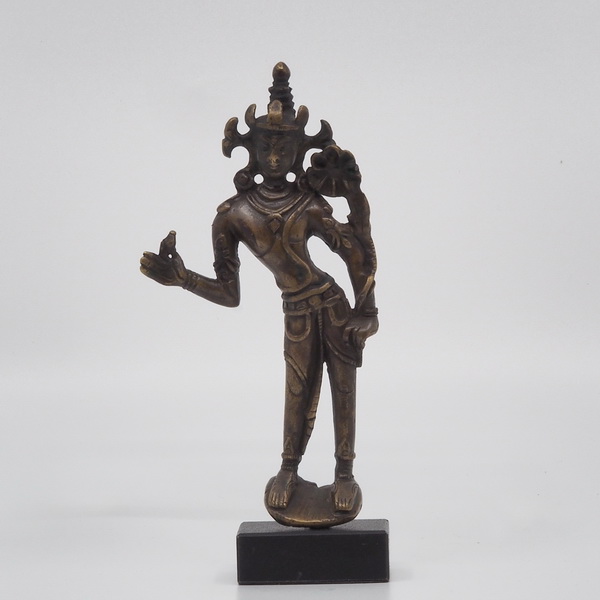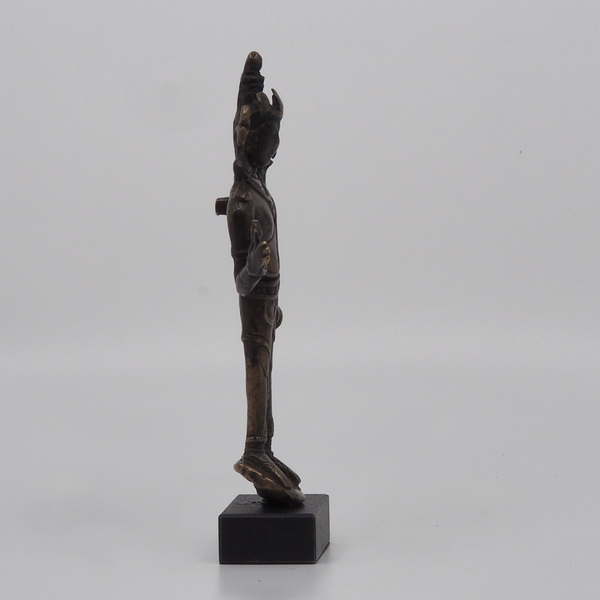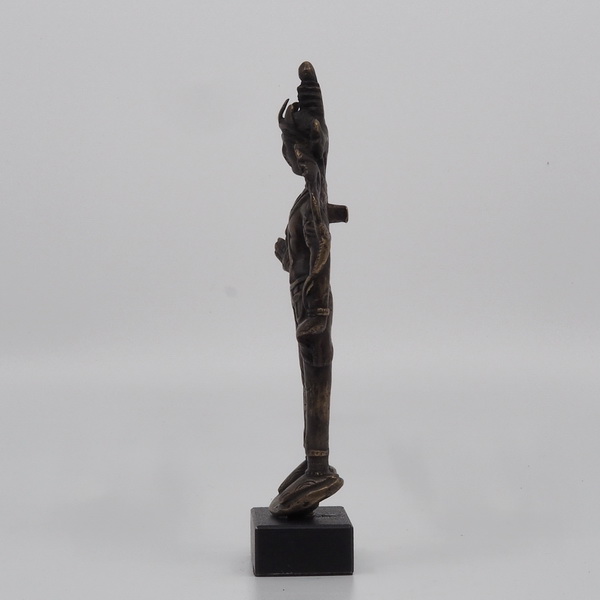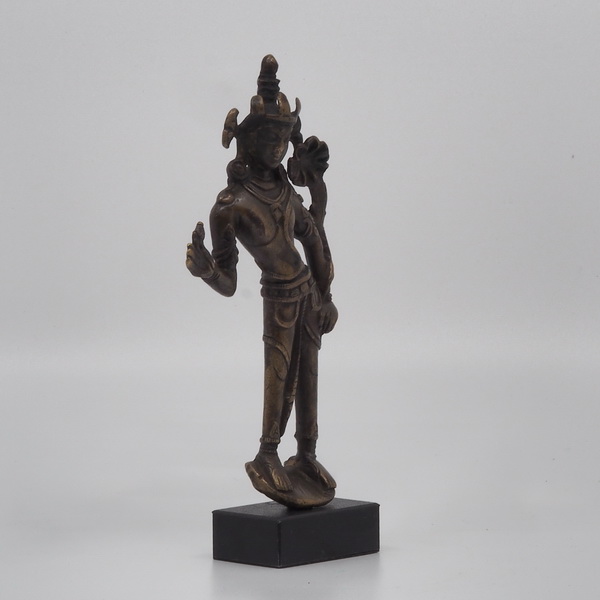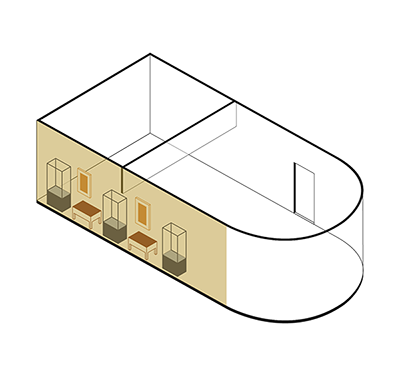ABS 333
Code: ABS 333
Country: Tibet
Style:
Date: 1050 - 1150
Dimensions in cm WxHxD: 7.3 x 14 x 2.4
Materials: Brass
Avalokiteshvara Padmapani (the lotusholder) embodies the compassion of all Buddhas. His tibetan name is Chagna Padmo. He is the one of the most revered bodhisattvas in Mahayana Buddhism.
He stands in a gracefully inclined posture (abhanga) on a round pedestal and wears a cloth (dhoti) girded around his hips. A lotus flower (padma) blossoms at his left shoulder. He wears princely ornaments: a crown, a necklace with pendant and bracelets on both upper arms, as well as the "investiture with the sacred thread" (upavita). As is customary for Indian ascetics, he wears his hair knotted into a matted crown (jatamukuta).
Bodhisattvas have generated bodhicitta (mind of enlightenment), and vowed to help all sentient beings until each and every one is free from suffering. Bodhisattvas can live incarnated in this world or dwell in a subtle body in the realm of sambogakaya, where they can be reached through meditation. Bodhisattvas are also named “the Buddhas lions”. Bodhisattvas put into practise the six basic paramitas (virtues): charity, morality, patience, effort, concentration and wisdom (dana, sila, ksanti, verya, dhyana and prajna) and the four paramitas which derive from the basic ones: skillful means, vows, power and knowledge (upaya, pranidhana, bala and jnana). Among the many, there are eight great or divine bodhisattvas. In the Nispanna Yogavali of Mahapandita Abhayakara Gupta three sets of sixteen bodhisattvas are mentioned.
He stands in a gracefully inclined posture (abhanga) on a round pedestal and wears a cloth (dhoti) girded around his hips. A lotus flower (padma) blossoms at his left shoulder. He wears princely ornaments: a crown, a necklace with pendant and bracelets on both upper arms, as well as the "investiture with the sacred thread" (upavita). As is customary for Indian ascetics, he wears his hair knotted into a matted crown (jatamukuta).
Bodhisattvas have generated bodhicitta (mind of enlightenment), and vowed to help all sentient beings until each and every one is free from suffering. Bodhisattvas can live incarnated in this world or dwell in a subtle body in the realm of sambogakaya, where they can be reached through meditation. Bodhisattvas are also named “the Buddhas lions”. Bodhisattvas put into practise the six basic paramitas (virtues): charity, morality, patience, effort, concentration and wisdom (dana, sila, ksanti, verya, dhyana and prajna) and the four paramitas which derive from the basic ones: skillful means, vows, power and knowledge (upaya, pranidhana, bala and jnana). Among the many, there are eight great or divine bodhisattvas. In the Nispanna Yogavali of Mahapandita Abhayakara Gupta three sets of sixteen bodhisattvas are mentioned.

